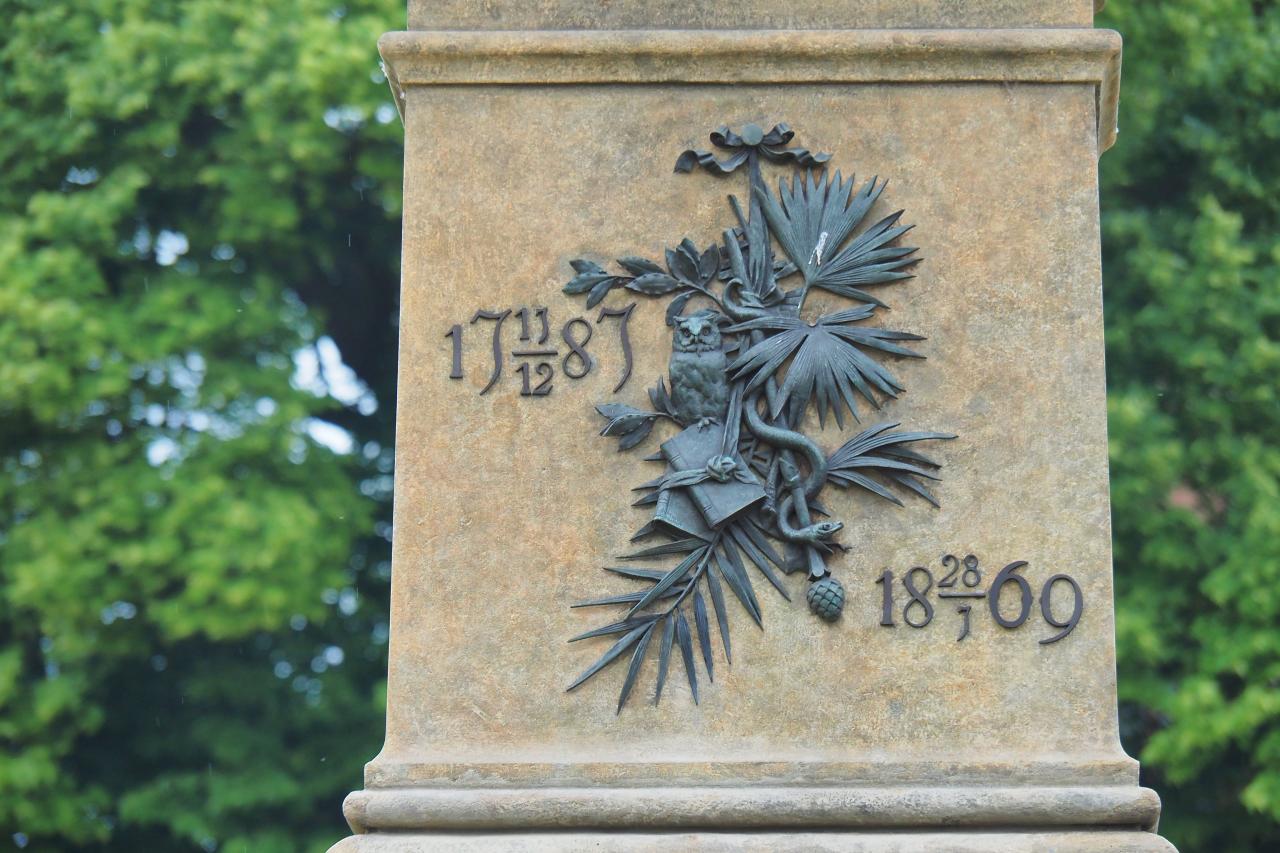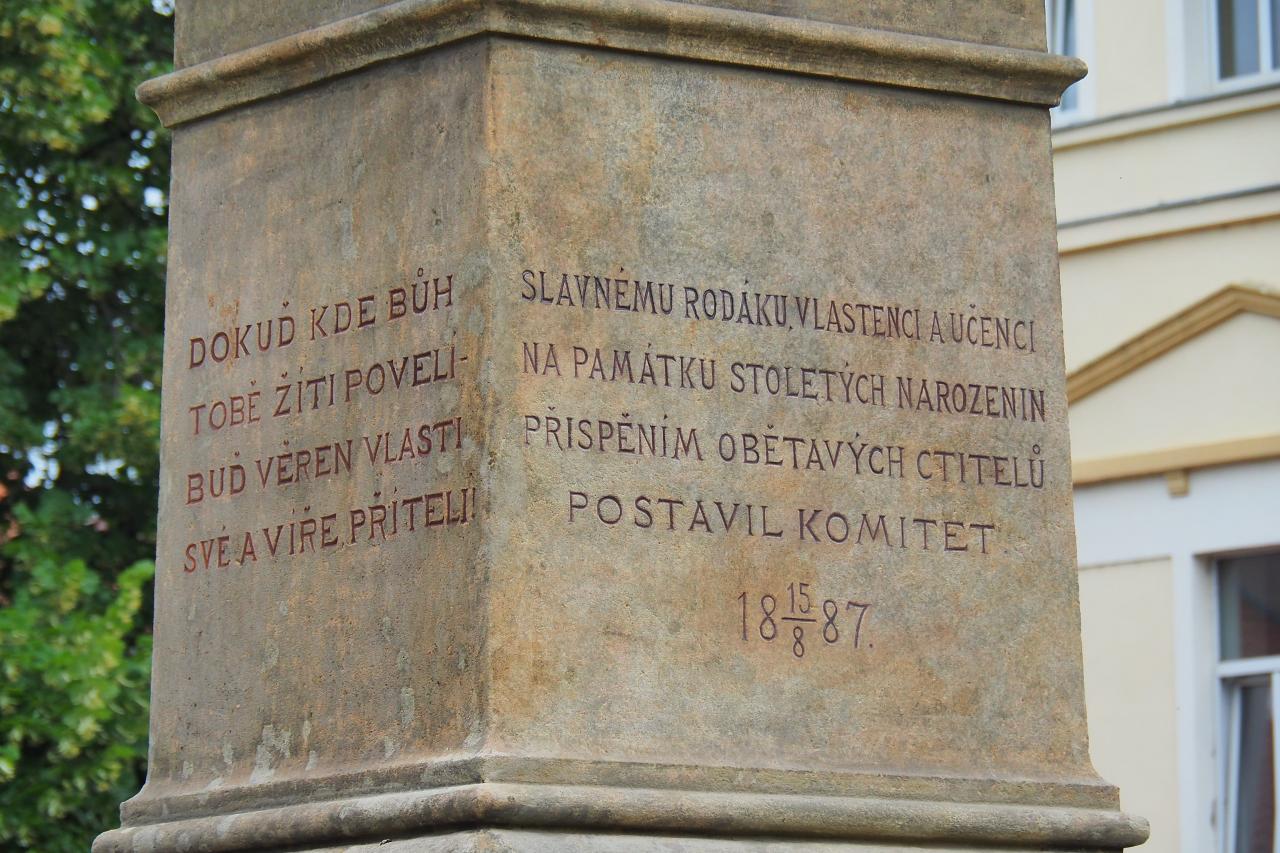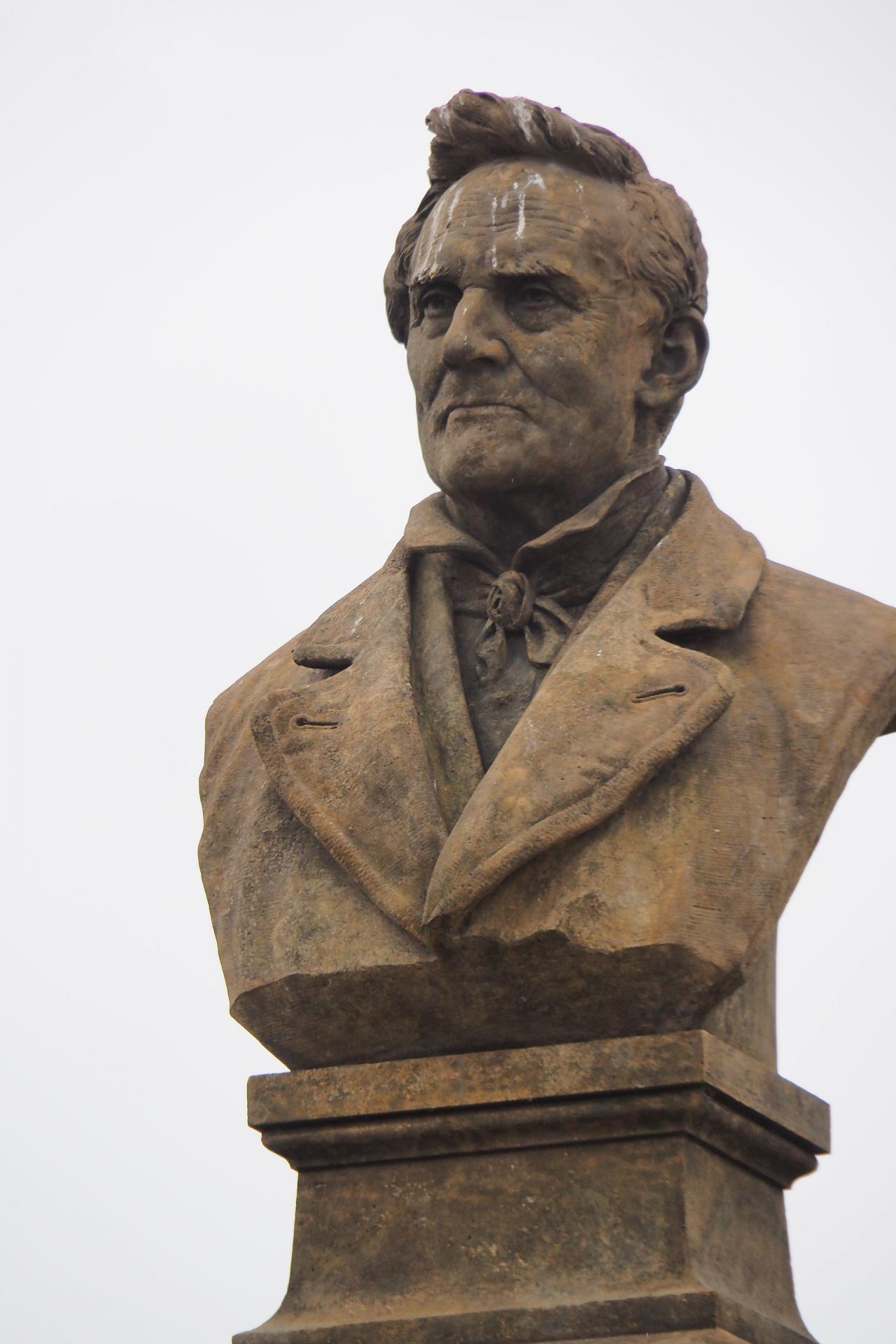Purkyně lived in Libochovice until he was ten. Then he left to study the Piarist Latin school in Mikulov, joined the order and started thinking about a career as a teacher. But he soon changed his mind and left the order in 1807. He studied philosophy and medicine at the University in Prague. He spent the most important part of his professional life (1823-1850) at the University in Wroclaw. Towards the end of his life he returned to Prague and actively influenced the scientific and cultural life at the height of the Czech National Revival. Purkyně returned to his native Libochovice regularly, for the last time in 1861 as a newly elected MP of the Czech Assembly.
Purkyně died on 28 July 1869 and already in August of the same year a committee for the erection of the monument was established. The committee launched a public fund-raising collection in 1870 which lasted an unbelievable seventeen years until 1887. This was the year for which celebrations were planned to commemorate the hundredth anniversary of Purkyně`s birth. 6.000 golden florins were collected. This money was divided in half by the committee and one half was used for the monument. The other half served to establish a foundation to support poor students of medicine at the university in Prague. The construction work on the foundations of the monument started in March 1887; the base and bust were delivered at the beginning of August.
The monument is made from the sandstone of Hořice. A larger-than-life bust is mounted on a simple square base with a moulded cornice head. The whole monument is six meters tall. On the front side of the base there is a bronze sculpture symbolising Wisdom and Medicine (owl with book and Aesculapius`s staff) with a laurel and palm branches. There are Purkyně`s dates of birth and death here too. Both sides of the base are inscribed with Purkyně`s two life mottos: “When homeland calls you, return thither. Help your country cheerfully with action and advice!” and “Until God calls you unto Him – be faithful to your homeland and your faith, my friend!” On the back side of the base there is the dedication and the date of the unveiling of the monument. Purkyně`s bust on the top of the monument was praised by the critics of the time as one of the most important and best executed works of sculptor Josef Strachovský.
The spectacular celebrations themselves took place from 14 to 18 August 1887 and there were fireworks, several parades of different societies, dancing and a ball. The ceremonial unveiling on 15 August was attended by the owner of the Libochovice estate the Countess of Herberstein, or the Young Czechs Party MP for the empire Eduard Grégr. Contemporary sources state eight thousand people came to Libochovice for the celebrations. Purkyně`s anniversary became one of the typical celebrations of Czech patriotism of the time; an occasion to demonstrate the sovereignty and independence of the Czech nation.
We encounter the name of this famous native often in the Libochovice public space. As soon as 1876 the Bridge Street where Purkyně`s parents lived was renamed Purkyně Street. A commemorative plaque was unveiled not far from the monument during the spectacular celebrations of Purkině`s 150th anniversary in 1937. And as part of his 200th anniversary in 1987 an exhibition on the life and work of Purkyně was opened. It is still accessible to the public today after it underwent some adjustments and adaptations.










